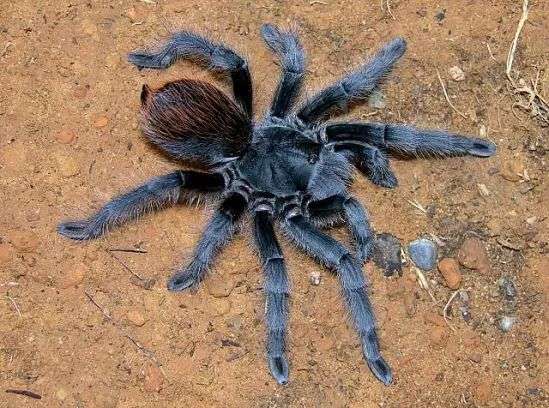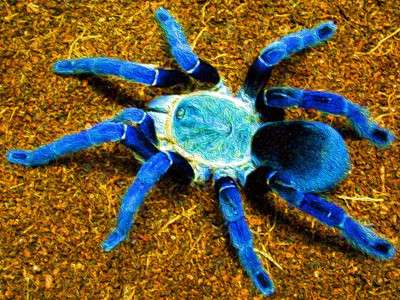
Aphonopelma marxi is a species of spider found in the United States that belongs to the Theraphosidae (tarantulas) family (Arizona, New Mexico, Colorado and Utah). Formerly thought to be distinct species, Aphonopelma behlei and A. vogelae are now thought to be synonyms.
Description
- Aphonopelma marxi is dark brown to black in color, extremely hairy, and has some orange to red hairs on its abdomen.
- The adult female has a bigger carapace, measuring 13.5 to 15.3 mm (0.53 to 0.60 in) long compared to the mature male’s range of 8.3 to 10.5 mm (0.33 to 0.41 in). A female’s total body length, including the chelicerae, is around 35 mm (1.4 in).
- The dark color, generally hairy appearance, size, and habitat of A. marxi set it apart from other species of the genus residing in the same regions.
- In contrast to related species, males have a larger ratio between the length of the first leg’s femur and the length of the metatarsus than females do. The ratio of the first leg’s femur to the third leg’s metatarsus in females is larger than 1.76, which is smaller in species like these.

Geographical Location and Habitat
In the “Four Corners” region of northern Arizona, northwestern New Mexico, southwestern Colorado, and southern Utah, Aphonopelma marxi is extensively dispersed in places of higher elevation. It can be found in a range of environments, such as sagebrush steppe and mixed conifer forests. Although the species is said to be “quite widespread” in these places, it can be challenging to spot because it typically hides in its underground burrow. All of the Marxi species group’s burrows have been characterized as being “extremely difficult to find.”
Bite
These spiders, like the majority of tarantulas, have strong venom that, when provoked, they administer by bite. However, other allergic reactions, their bite does not kill people.
Diet
They consumes Rodents, insects, lizards, insects, birds, and centipedes
Lifespan
Males are 8 to 10 years old, while females are 20 to 25.
Web
This tarantula does not use its webbing to capture food because they are ambush hunters. To alert it to any attempted forced entry, it does leave a silk thread at the entrance to its burrow.
Table





